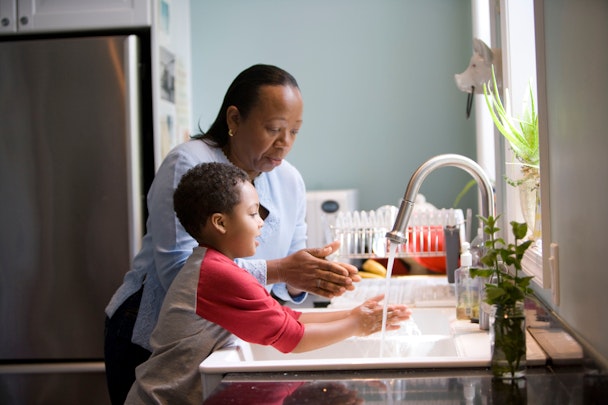Trends with benefits: how the ad industry can help transform health at Cannes
As the Cannes Lions Festival of Creativity returns following two years of postponement due to the Covid-19 pandemic, global health is on the forefront of the creative industries’ minds – or at least, it should be. Claire Gillis, chief executive officer of VMLY&R Health, explains why now is the ideal time for adland to use its power for the global good.

There’s never been a greater need for the ad industry to play a transformative role in global health / Image via Unsplash
Packing my bags for Cannes, I’m reminded of just how far we’ve come. The global health story of 2022 is a tale of exceptional growth; everything from spending on medicines and investment in innovation, to consumer engagement and digital disruption, is pointing health in a positive direction. But a familiar issue reminds me just how far we’ve still got to go: health disparities are getting deeper and wider. Solutions to the problem will inevitably maximize the gains we’ve made, but they must also make room for an unsung part of the healthcare toolkit: creative advertising.
There’s never been a greater need – or a greater opportunity – for the ad industry to play a transformative role in global health. We’re within touching distance of a revolution where advances in science and technology could see us make extraordinary ground in the treatment of disease. But, with research suggesting nine out of 10 adults struggle to understand health information, it’s clear that innovation alone isn’t enough. Getting the most out of breakthrough technologies isn’t just a question of science, it’s a question of creative communication. Transformation won’t happen by accident – we have to connect the dots. It’s creativity’s chance to change and save lives.
One of the most promising developments in recent years has been the steady increase in health advertising. Where ad budgets in many other sectors have tightened, pharma has bucked the trend, increasing its investment in the full orchestra of creative communications. Agency growth in health is double-digit and rising.
This shouldn’t surprise us. The global spotlight is full beam on health; it’s the main stage at Cannes and center stage for everyone. Consumers are more actively involved in their health than ever before, with over 230bn health-related Google searches each year underlining our burgeoning engagement. Expectations are growing too; we’re demanding self-serve solutions to manage our health, a louder voice in decisions about our care and better information to guide us. Shifting the dial on the 90% of adults who struggle to understand health information isn’t an option – it’s an obligation.
The growth in advertising to support that objective is just one of several macro trends that should help improve health outcomes. Global spend on medicines is forecast to grow by 6% by 2025, with new treatments powering progress in developed markets and growth rates returning to pre-pandemic levels.
Digital health is motoring too, with everything from digital therapeutics and telehealth to remote monitoring and decentralized clinical trials changing the way we experience care. Digital is also taking a bigger slice of marketing budgets, with video, mobile and on-demand platforms increasingly supporting interactions at the point of care and at home.
It’s exciting stuff, but persistent health disparities remain a sobering message. The health equity gap is widening. Disparities in access to care, already alarming before the pandemic, have further reduced health outcomes among diverse populations. Covid has only magnified long-standing health inequities. We must use every tool in our toolbox to rapidly right those wrongs.
Across the ad industry, the pursuit of health equity must be a priority. With innovation and expertise at our disposal, it’s a golden opportunity for creativity to make a meaningful difference.
We’re beginning to see the impact of digital disruption as consumer technologies journey into healthcare and promise to change the game. The use of artificial intelligence (AI), virtual reality (VR), augmented reality (AR) and voice technologies are transforming health, creating new touchpoints for consumers and connected experiences that matter. VR and immersive tech is helping us understand the lived experiences of people with widespread diseases such as dementia and stroke or rare conditions such as PKU. We’re seeing an uptick in gamification to creatively reach audiences and raise awareness of health issues – with NFTs even being used to encourage screening for testicular cancer.
Innovation is bursting. But our challenge as creative communicators is to achieve transformation at scale as we redouble efforts to get healthcare to more people.
In the coming years, we’ll see the routine use of mixed reality (MR) and holographic technology. They’re already transforming medical training and education, and opening up new opportunities for patient support. Similarly, the growth of AR wearables to support language translation in real-time will provide new avenues for effective patient communications at the point of care and beyond.
The metaverse will eventually become standard, opening the door to more immersive health experiences that connect and inspire.
Right now, we’re barely scratching the surface of 5G technology – but the potential to take learning and information exchange to another level in health is real, paving the way for more efficient models of healthcare and freeing up resources to ensure essential health services reach more people.
These are the trends, so when I’m in Cannes, I’ll be on the lookout for great ideas and creatives who can translate them into trends with benefits.
Claire Gillis is the chief executive officer of VMLY&R Health.
